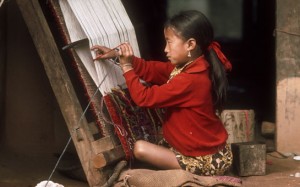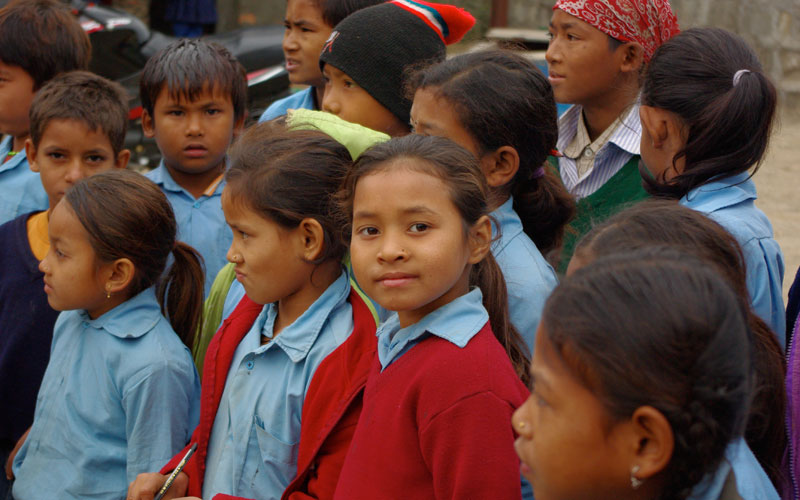 Children have a tough life in Nepal. Their childhood is short and their life choices are limited by the lack of opportunities.
Children have a tough life in Nepal. Their childhood is short and their life choices are limited by the lack of opportunities.
A typical day for a Nepali child in the villages where Himalayan Learning works starts early, between 4 and 5am, and finishes when it gets dark.
The poorest children work, usually doing another family’s housework. If they live with their own family, it’s usually in someone else’s house.
Girls and boys usually do different kinds of work. Boys will often be responsible for looking after the family’s animals, and girls will be responsible for siblings or other children, and for cooking. Both do farm work.
Those children who are lucky enough to go to school often leave early. Very few Nepali children complete primary school.
A typical day in the village
5am – Get up
6am – take animals out to fields and collect water
8am – eat breakfast
9am – walk for an hour to school
10am – start school
3pm – finish school and walk home
4pm – out to fields to start work
7pm – back for dinner
8pm – into bed
Child labour
All of the poorest children in Nepal work from an early age. They do a range of jobs from inside the house, to working outside for money. Stopping child labour is very difficult because a child’s family is usually completely reliant on the work in order to survive.
| Child labourers in Nepal | |
| Total – Boys – Girls |
31% 30% 33% |
| Statistics about child labour in Nepal | |
There are 1.7m child labourers in Nepal |
60% are girls 64% go to school, 36% do not go to school 26% of boys do not go to school 49% of girls do not go to school 1.4 million are involved in unpaid activities 278,000 are in paid work |
Nepali girls work longer hours than boys |
88% of girls work 14+ hours per day 80% of boys work 14+ hours per day 35% of girls worked 42+ hours per week 22% of boys worked 42+ hours per week |
Children work more in the mountains than in the valleys |
52.3% of children work in the mountain region 45.4% in the hilly region (Mahabarat) 36.3% in the flat region (Tarai) |
127,000 children are involved in the most hazardous work |
57,000 bonded child labourers 55,000 domestic workers 46,029 child porters 12,000 girls trafficked every year |
Despite this, the majority of poor families understand the value of education for their children, and would, if they had the choice, send their children to study more and work less.
Unfortunately however, the first effect of extreme poverty is to remove that family’s choice.
Going to school
The government is proud of the fact that today almost all children go to school. However, this hides the reality.
Where Himalayan Learning works, about 90% of children now start primary school. Unfortunately the poorest children rarely get more than one or two years education. Very few ever complete primary school.
Children stop going to school for many reasons. Often their parents cannot even afford basic school equipment like a pencil or a book. So they decide that rather than face the shame of going to school without proper clothes or any equipment, they go to work.

Childhood
Despite the tough lives Nepali children face, they are still children. Their childhood may be short, but you can still see the joy and happiness when they get to play. Himalayan Learning encourages schools and teachers to free their children to play, providing for example sports and games equipment where we can.





